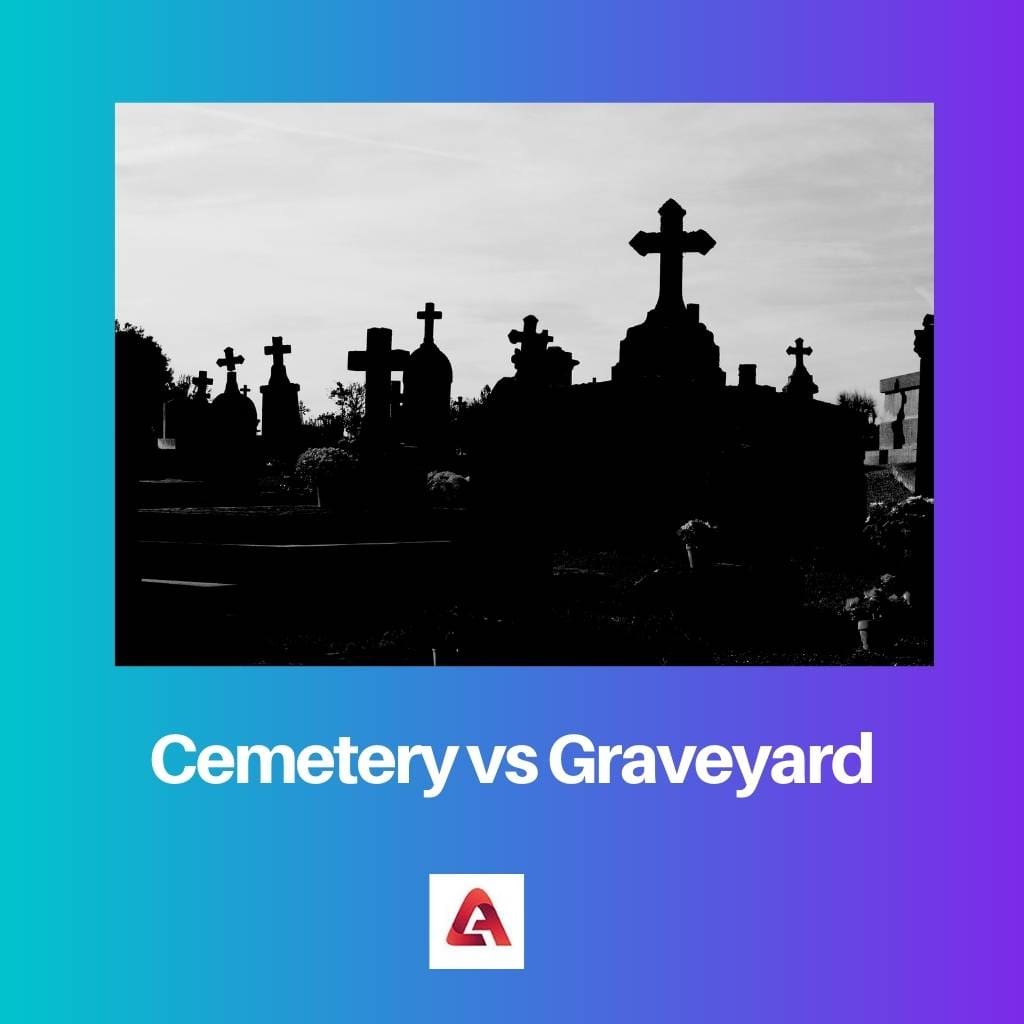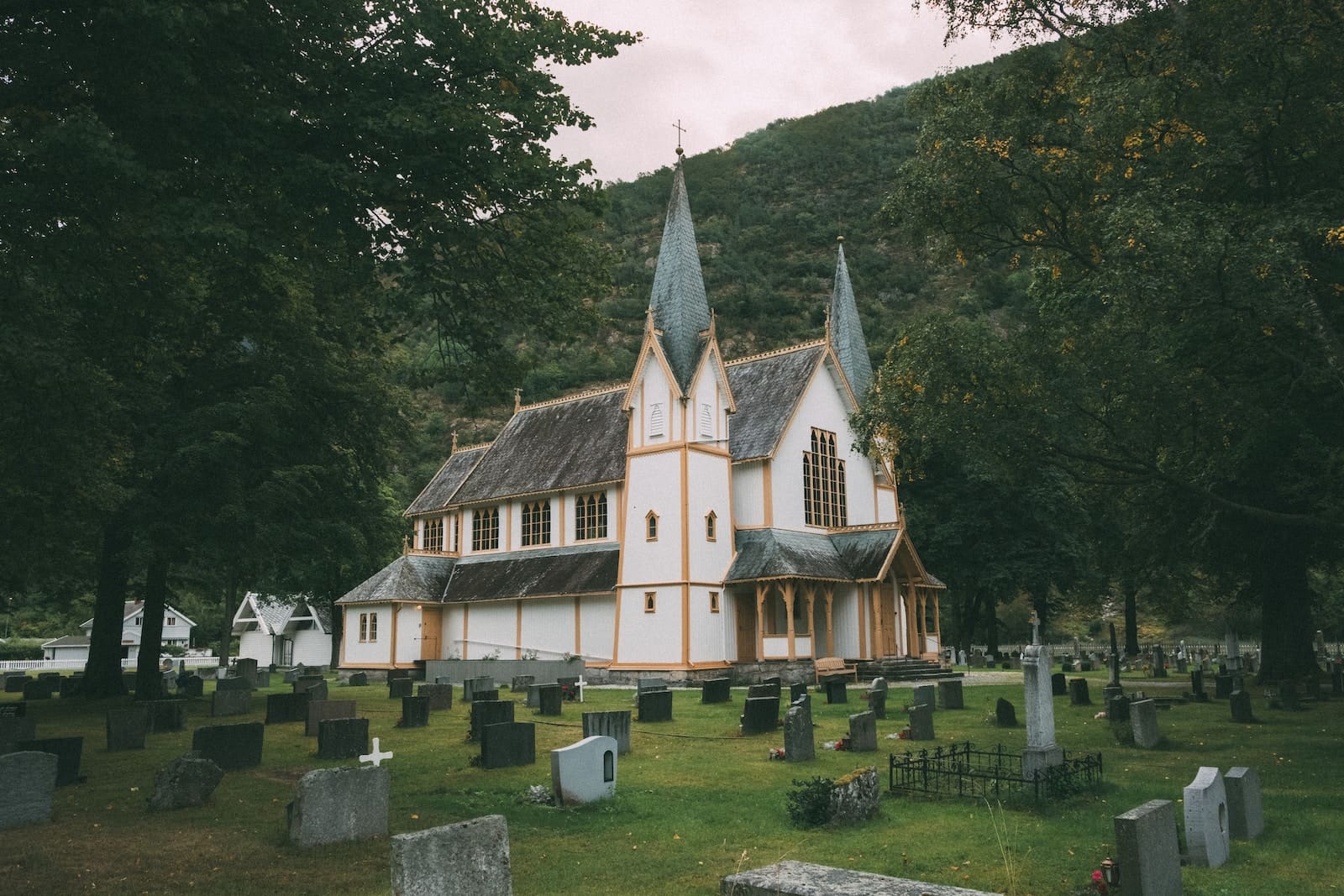Key Takeaways
- Cemeteries are larger burial grounds not associated with a specific church or religion. In comparison, graveyards are smaller burial grounds related to a specific church or religion.
- Cemeteries are landscaped with trees, flowers, and other features, while graveyards are simpler in design.
- Cemeteries may offer additional services, such as cremation and mausoleums, while graveyards are limited to traditional burials.

What is a Cemetery?
A cemetery is described as a site where the deceased person is buried. The word “cemetery” is derived from the Greek word “koimeterion,” which means “dormitory” or “resting place,” according to its origin.
Early Christians first used the phrase cemetery to describe a person’s final resting place. By the beginning of the 19th century, population growth was quick. New burial grounds were required because church cemeteries were overcrowded. As a result, autonomous locations referred to as “cemeteries” increased in popularity as places of final rest.
You do not have to be a member of a particular church to be buried there because cemeteries are not connected to one. They are frequently situated outside a town or city to provide additional room for dead people.
Cemeteries can be simple or grandiose, constructed with aesthetic and sanitary considerations. The upkeep and sale of actual burial rights, such as plots, crypts, or niches, as well as the continuing maintenance of the cemetery’s grounds and facilities, are within the authority of cemeteries.

What is a Graveyard?
A graveyard is where individuals are buried, near a church. The proto-Germanic word “Graban,” which means “to dig,” and “garden,” which denotes a defined area of land, combine to form the term cemetery.
Affluent or influential Christians were buried inside a church throughout the Middle Ages, frequently in a crypt beneath the floor. The churchyard’s exterior area, where less affluent members were interred, became known as the graveyard.
There are many lovely ancient headstones and graves around a historic cemetery. Graveyards are associated with a church and are frequently seen there. Due to land restrictions, they have smaller populations and are pickier. In some cases, only members of that particular church or their particular religion are permitted to be buried in a graveyard.

Difference between Cemetery and Graveyard
- Cemeteries are massive graveyards without a religious affiliation. On the other hand, a graveyard is a burial area that is situated on a church’s grounds. In general, graveyards are substantially smaller than cemeteries.
- Churches may impose restrictions that only people of that particular faith be buried in their affiliated graveyard. Cemetery, however, is a secular place. This implies that there can be burials for people of all religions.
- Churches mandate that gravestones in cemeteries be made of uncoloured, unpolished stone and forbid or discourage ornate memorials. On the other hand, there are far fewer limitations on headstones in cemeteries. You can be as plain or fancy as you choose.
- Cemeteries are newer, better cared for, and neatly arranged into rows of plots. Conversely, ancient gravestones are dispersed more disorganizedly than modern graveyards.
- The Greek word “koimeterion,” which means “dormitory” or “resting place,” is the source of the English expression “cemetery.” At the same time, the word graveyard is a composite made up of the proto-Germanic words “Graban,” which means “to dig,” and “garden,” which indicates a fenced-in tract of land.
Comparison Between Cemetary and Graveyard
| Parameter of Comparison | Cemetery | Graveyard |
|---|---|---|
| Location | It is situated on a church’s grounds and is religiously affiliated. | Independent and separate ground for cremating the body without being religiously affiliated. |
| Restriction | Restrictive due to religious boundaries. | Secular and very few limitations. |
| Maintenance | Typically newer, taken better care of, and neatly arranged into rows of plots. | They are dispersed, more disorganizedly than modern graveyards. |
| Headstones | Made of uncoloured, unpolished stones and forbid or discourage ornate memorials. | There are far fewer limitations on headstones in cemeteries. You can be as plain or fancy as you choose. |
| Word Origin | Greek word “koimeterion,” which means “dormitory” or “resting place.” | Proto-Germanic words “Graban,” which means “to dig, and “garden.” |




